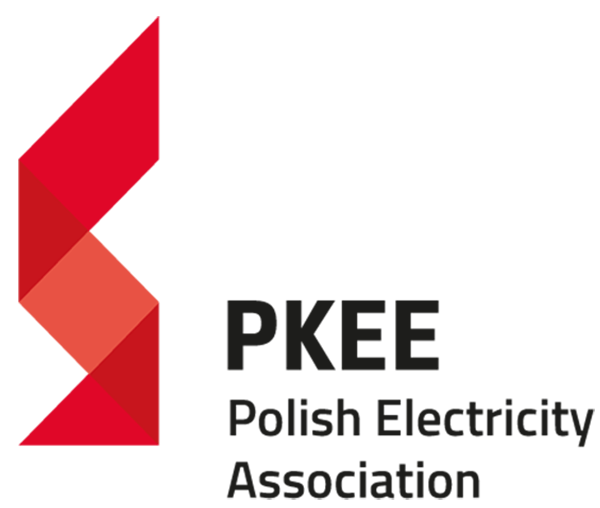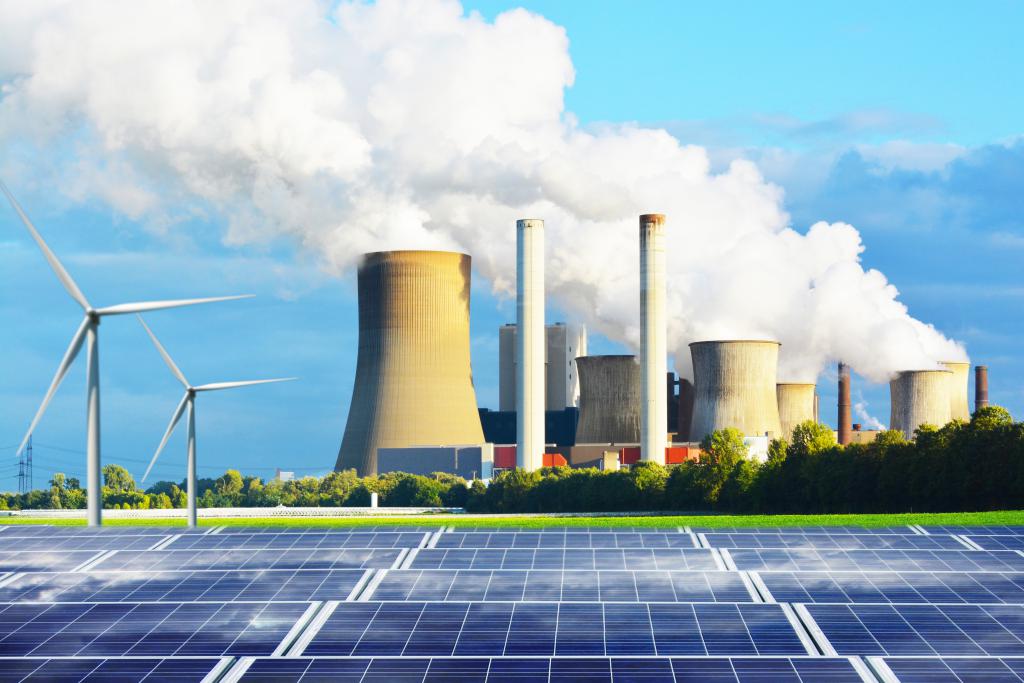The Polish Electricity Association (PKEE) believes that electrification should be the main driver of energy transition, accelerating decarbonisation in other sectors of economy. According to “Decarbonisation Pathways”, a study by Eurelectric, in 2050 electricity will play a leading role in transport, as it will constitute up to 63% of the total final energy consumption in the transport sector, and up to 50% of industrial processes will be directly electrified. The competitiveness of electricity against other carbon-neutral fuels will be the crucial cause of this shift.
Direct electrification can boost the decarbonisation of the EU
According the Eurelectric study[1], electrification may reduce GHG emissions in three ways: by enabling the phasing out of more polluting fuels, by increasing the overall system energy efficiency, and by unlocking innovative, zero-emission technologies such as Power-to-X or smart grid solutions, which can further contribute to the climate objectives. Therefore, electricity should be considered the main driver of deep decarbonisation of the EU economy. The PKEE believes that in order to bring the benefits of clean energy to EU citizens and businesses in a cost effective manner, electricity needs to be put at the heart of the transition. smart gridemissions, which is crucial for achieving climate targets. Therefore, according to PKEE, electricity should be the flywheel of decarbonisation, being the centre of the transformation towards zero-emission. Such an approach will allow all citizens and businesses to take full advantage of the benefits of the energy transition and ensure that it is cost-effective.
The European electricity sector has a significant potential to replace the highly polluting energy sources with renewables and, in the short-term perspective, with natural gas, in order to bring about a significant reduction of CO2 emissions and an improved air quality. The natural gas fired power units will also play an important role in ensuring grid reliability and stability, as they can successfully serve as the low-emission dispatchable source of energy, which is crucial in energy systems with an increasing share of intermittent renewable energy sources. Investment in these facilities would not result in “carbon lock-in effect”, since in the future they can be used for the purpose of combusting renewable gases.carbon lock-in", as in the future these units could be used to burn so-called renewable gases.
Renewable energy sources need to be taken on board in order to effect a long-lasting decarbonisation of the electricity sector. A successful deployment of these energy sources, particularly onshore and offshore wind as well as PV power plants, is of key importance, as it results in decarbonisation and helps unlock the potential of coupling solutions in the hard-to-decarbonise sectors. sector coupling) for industries that are difficult to decarbonise.
Position of the Polish Electricity Association on the Smart Sector Integration Strategy June 14th, 2020 Position papers The Polish Electricity Association (PKEE) believes that electrification should be the main driver of energy transition, accelerating decarbonisation in other sectors of economy. According to “Decarbonisation Pathways”, a study by Eurelectric, in 2050 electricity will play a leading role in transport, as it will constitute up to 63% of the total final energy consumption in the transport sector, and up to 50% of industrial processes will be directly electrified. The competitiveness of electricity against other carbon-neutral fuels will be the crucial cause of this shift. Direct electrification can boost the decarbonisation of the EU According the Eurelectric study[1], electrification may reduce GHG emissions in three ways: by enabling the phasing out of more polluting fuels, by increasing the overall system energy efficiency, and by unlocking innovative, zero-emission technologies such as Power-to-X or smart grid solutions, which can further contribute to the climate objectives. Therefore, electricity should be considered the main driver of deep decarbonisation of the EU economy. The PKEE believes that in order to bring the benefits of clean energy to EU citizens and businesses in a cost effective manner, electricity needs to be put at the heart of the transition. The European electricity sector has a significant potential to replace the highly polluting energy sources with renewables and, in the short-term perspective, with natural gas, in order to bring about a significant reduction of CO2 emissions and an improved air quality. The natural gas fired power units will also play an important role in ensuring grid reliability and stability, as they can successfully serve as the low-emission dispatchable source of energy, which is crucial in energy systems with an increasing share of intermittent renewable energy sources. Investment in these facilities would not result in “carbon lock-in effect”, since in the future they can be used for the purpose of combusting renewable gases. Renewable energy sources need to be taken on board in order to effect a long-lasting decarbonisation of the electricity sector. A successful deployment of these energy sources, particularly onshore and offshore wind as well as PV power plants, is of key importance, as it results in decarbonisation and helps unlock the potential of coupling solutions in the hard-to-decarbonise sectors. Electricity can be used in multiple sectors. In the heating sector for example, individual electric heating installations can cover a significant part of the demand for heat in urban areas, without access to the district heating network. Electricity can also power the transport sector, bringing to zero its carbon footprint and increasing its efficiency. Moreover, smart charging, through vehicle-to-grid technology, can also contribute to the systems’ stability by increasing the security of supply. Low-temperature industrial processes can also be decarbonized through direct electrification. Other applications include technologies such as waste-to-energy. Highly efficient CHP plants are another example of well-established sector coupling due to a higher efficiency of the combustion process. vehicle-to-grid) can contribute to the stability of the electricity system by increasing security of supply. Low temperature industrial processes can also be decarbonised through direct electrification. Other applications include waste-to-energy (WTE) technologies. waste-to-energy). High-efficiency combined heat and power plants are another current example of the integration of sectors allowing higher combustion efficiencies.
Against this background, the PKEE calls for a smart strategy of sector integration, which fully recognizes the potential of the electricity in the decarbonisation of multiple sectors of the European economy. The PKEE believes that the sector coupling strategy needs to reaffirm the EU approach towards electricity as an important driver of decarbonisation, which will in consequence provide the energy sector with a clear signal to further develop electricity-based solutions that contribute to sector integration.
The PKEE members are actively exploring the potential of sector coupling
The PKEE Members are actively engaged in R&D programmes aimed at exploring the benefits of sector integration, which will ensure their long-term compliance with energy and climate objectives. Our members cooperate closely with universities (such as Poznań University of Technology) and research institutes, and participate in EU coalitions aimed at exploring the potential applications of the latest technologies in the energy system (e.g. in the EUniversal programme, which is supported by the Horizon 2020 Instrument). The PKEE members are also exploring the potential of waste-to-energy technologies, which can benefit the development of circular economy in Poland. waste-to-energy), which may contribute to the development of a closed loop economy in Poland.
Indirect electrification creates opportunities for sector-coupling solutions
The role of electricity, however, should not only be limited to the direct electrification of certain sectors of economy. The increasing volume of renewable electricity results in a unique opportunity to ensure a better integration of multiple energy sectors (such as gas, liquid fuels, heat and electricity), which will in turn strengthen the EU efforts to deliver low- and zero-emission solutions for the economy.
The PKEE acknowledges the future potential of decarbonised and renewable gases in reaching the climate neutrality objective in certain sectors. These gases can be used to complement the decarbonisation of those sectors that cannot benefit from direct electrification. When economically feasible, green hydrogen can complement battery storage systems and serve as seasonal energy storage. However, considering the relatively early stage of development of these technologies, we believe that additional research is necessary and EU funding should be established in order to obtain the know-how necessary for large-scale applications. know-how necessary for large-scale deployments.
The PKEE also believes that smart charging technologies will be relevant in the development and introduction of the V2G technology, which enables a bidirectional energy flow between an electric vehicle and the power grid, allowing EVs to be used as mobile energy storage integrated with the grid. However, the PKEE draws attention to the fact that the deployment of the vehicle-to-grid technology in different regions needs to be the subject of a case-by-case evaluation in order to enable the system operators to adapt these solutions to the specificity of their local grids. vehicle-to-grid in individual regions must be evaluated on a case-by-case basis to enable system operators to adapt these solutions to the specific conditions of the electricity network concerned.
In order to unlock the potential of smart sector integration, a comprehensive framework aimed at facilitation the R&D phase must established, and support must be provided in the demonstration and implementation phases. The framework should recognize the need to adapt the existing rules to sector-coupling solutions so as to establish clear rules for the most promising technologies, and provide robust financial support for innovation. Furthermore, the PKEE believes that the support for the R&D programs should also foster the development of research infrastructure. This support will level the playing field between the Member States, also contributing to the research potential of the whole EU.
Infrastructure challenges related to the sector coupling
Investment in sector coupling also necessitates robust support for the development of the infrastructure required to ensure successful integration of renewable energy (through both large-scale projects and on-site facilities) and to maintain security of supply. With this in mind, the PKEE believes that a key role will be played by the electricity distribution grids in managing the increasing volumes of energy. In PKEE’s opinion, the development of the electricity distribution grid should be linked with a gradual deployment of smart grid solutions. smart grid.
Preserving the reliability of electricity grids also requires that the connection of new renewable sources to the grid should be planned in smart way. In this regard, the PKEE believes that the accessibility of dispatchable sources of energy should be taken into account when preparing the development plans.
[1] https://cdn.eurelectric.org/media/3457/decarbonisation-pathways-h-5A25D8D1.pdf
DOWNLOAD FILES

